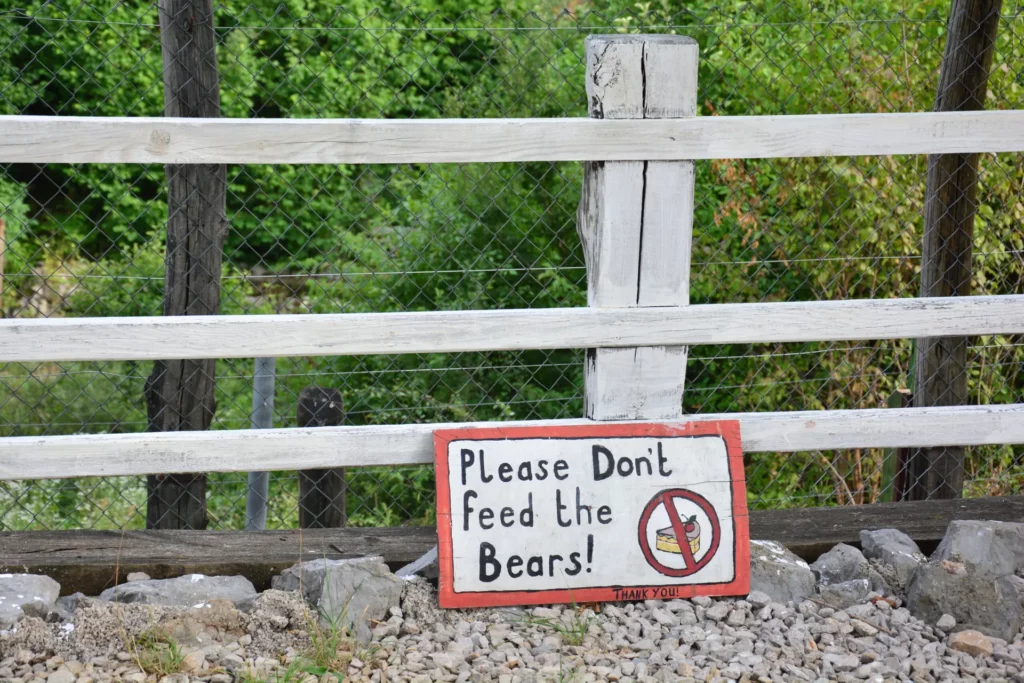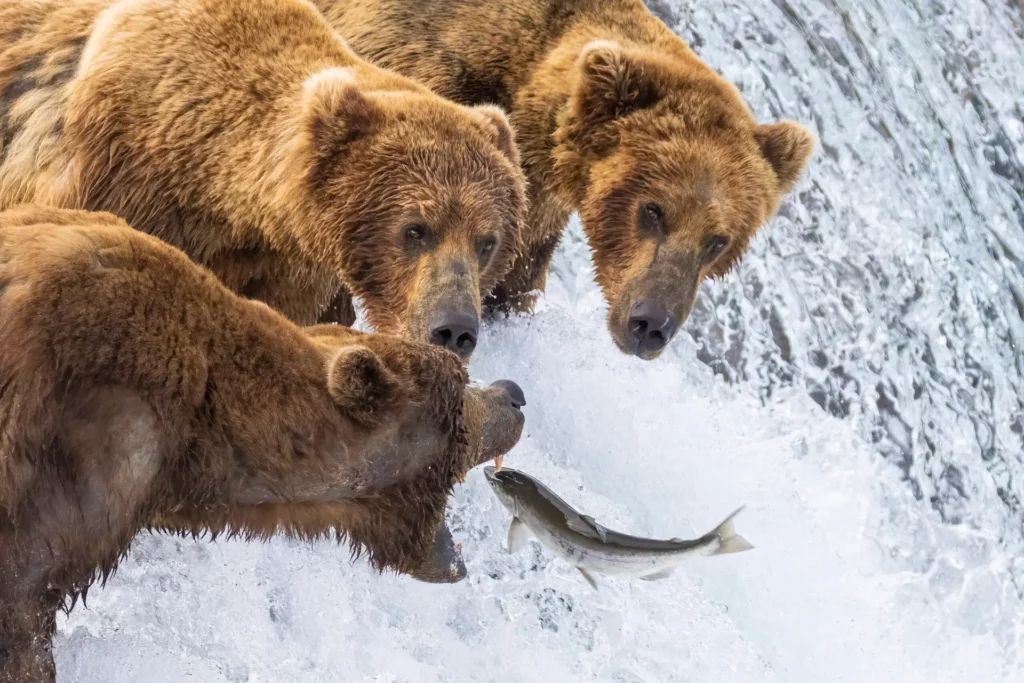Bare vs. Bear
Navigating the English language’s rich tapestry, we encounter words like bare vs. bear, which, despite their phonetic similarity, lead us down distinctly different semantic paths. “Bare” reveals and uncovers, stripping away layers to expose the essence beneath, whether used as an adjective to describe something uncovered or as a verb to reveal or expose. “Bear,” conversely, carries multiple burdens, from the literal act of holding or supporting weight to enduring hardships to the simple existence of the furry mammal roaming forests and mountains.
This guide embarks on a clarifying journey, distinguishing between bare vs. bear to ensure precision in communication. By exploring their definitions, uses, and contexts, we aim to illuminate these commonly confused terms, enhancing clarity and enriching our conversations and writings.

Part 1: Understanding Bare vs. Bear
Distinguishing bare vs. bear begins with a foundational understanding of their definitions and roles in English. This understanding sets the stage for effective and accurate use in speech and writing.
Definitions and Roles
Bare:
- As an adjective, “bare” describes something not covered, clothed, or decorated; it signifies exposure or lack of embellishment. It speaks to the essence of being uncovered, revealing the underlying truth or reality without adornment.
Example: “The room was bare, with only a single chair in the corner.” - As a verb, “bare” means to uncover or expose something, often something hidden or kept secret. It’s an act of revelation, revealing what was previously concealed.
Example: “She bared her heart, sharing stories she’d never told anyone.”
Bear:
- As a verb, “bear” encompasses a range of actions from carrying or holding up to enduring or withstanding to giving birth (in the case of some animals). It suggests resilience, the capacity to support burdens, and the continuation of life.
Example: “He bore the heavy load with surprising ease.” - As a noun, “bear” refers to the large, heavy mammal with thick fur and a short tail. It is known for its strength and often solitary nature.
Example: “The bear roamed the forest in search of food.”
Grammatical Rules and Usage Guidelines
Understanding when to employ bare vs. bear is crucial for maintaining clarity and specificity in communication:
- Contextual Clarity: Use “bare” when referring to the absence of coverings or the act of revealing or exposing something. “Bear” should be used when describing carrying burdens, enduring hardships, or the mammal.
- Identifying the Focus: Assess whether the subject matter involves exposure or revelation (“bare”) or the concepts of support, endurance, or the animal itself (“bear”). This assessment guides the appropriate choice between these terms, ensuring the message is conveyed accurately and effectively.
By establishing a clear foundation for understanding bare vs. bear, we pave the way for their correct and confident application, enabling nuanced and precise communication that adeptly navigates the complexities of language.

Part 2: Using “Bare”
The term “bare” delves into exposure and simplicity, revealing truths or states without adornment. Its adjective and verb usage enhances narratives, allowing for expressions of vulnerability, openness, and unadorned reality.
“Bare” for Uncovering or Exposing
- Purpose and Application: As an adjective, “bare” effectively describes something in its simplest form, without covering or embellishment. As a verb, it signifies revealing or revealing what was previously hidden.
Example (Adjective): “The walls of the newly rented apartment were bare, waiting for a personal touch.”
Example (Verb): “The report aimed to bare the facts, shedding light on previously obscured details of the case.”
Common Contexts for “Bare”
“Bare” is particularly relevant in:
- Descriptions of Physical States or Environments: Highlighting the absence of decoration or covering.
Example: “The tree branches were bare after the leaves fell, signaling the start of winter.” - Expressions of Emotional or Conceptual Revelation: When discussing moments of honesty, openness, or the stripping away of metaphorical coverings.
Example: “The novel bares the complexities of human relationships, leaving the reader with much to ponder.”

Part 3: Using “Bear”
In contrast, “bear” traverses the landscape of endurance, support, and the natural world. As a verb, it speaks to the capacity to carry burdens or to withstand challenges; as a noun, it references the formidable mammal known for its strength and resilience.
“Bear” for Carrying and Enduring
- Purpose and Application: Use “bear” as a verb to describe supporting weight, enduring difficulties, or carrying responsibilities. As a noun, it refers to the animal, symbolizing strength and sometimes solitude in various cultures and literatures.
Example (Verb): “She bore the leadership responsibility with unwavering dedication.”
Example (Noun): “During their hike, they encountered a bear, reminding them of the wilderness’s untamed nature.”
Differentiating Bare vs. Bear
Distinguishing between bare vs. bear relies on understanding their distinct applications—”bare” for the states of being uncovered or exposed and “bear” for acts of carrying, enduring, or referring to the mammal.
- Exposure vs. Support/Endurance/Animal: While “bare” illuminates the absence of concealment or the act of revelation, “bear” encapsulates a spectrum of support and endurance, from the physical to the emotional, and includes the literal bear.
Example (Bear as Verb): “The bridge was designed to bear heavy loads, even in adverse weather conditions.”
Parts Two and Three explore the nuanced uses of bare vs. bear, highlighting their appropriate application in contexts ranging from the descriptive and emotional to the realms of responsibility and the natural world. Understanding each term’s specific scenarios and implications enables communicators to articulate concepts of exposure, support, and endurance with clarity and depth, enriching discourse across a broad spectrum of subjects.

Part 4: Common Mistakes and How to Avoid Them
Navigating the linguistic waters where bare vs. bear coexist requires a keen sense of their distinct meanings to avoid confusion. Mixing up these terms can lead to messages that obscure rather than clarify, mainly when the precision of communication is critical.
Confusing Bare vs. Bear
The most common mistake involves using “bare” when “bear” is intended, or vice versa. This error can significantly alter the intended meaning of a sentence, especially in written communication, where the context might not be enough to correct the misunderstanding.
- Strategy for Avoidance: Remember the core difference—“bare” relates to exposure or the state of being uncovered, while “bear” involves carrying, enduring, or the animal. A mnemonic might be to think of “bare” as sharing an “a” with “naked,” indicating exposure, and “bear” as containing “ear,” suggesting one must “endure” to “hear” or carry through to the end.
Overgeneralization of Terms
Another pitfall is overgeneralizing “bear” for all its meanings, including bearing children, which can sometimes be confused with “born.”
- Clarification Tip: Pay close attention to the context of your message. If discussing the concept of birth, “born” is more appropriate. Reserve “bear” for carrying, supporting, enduring, or the animal, and “bare” for exposure or revelation.
Tips for Correct Usage
Adopting a thoughtful approach to using bare vs. bear not only prevents common errors but also enhances the richness and precision of our communication, enabling us to convey our thoughts and stories more effectively.
- Mindful Review: Make it a habit to review your texts for bare vs. bear to ensure you’ve chosen the appropriate term based on the context and intended meaning.
- Practice with Examples: Engage with content that uses both terms correctly to reinforce their distinctions and solidify your understanding.
- Seek Feedback: Exchanging your writings or verbal communications with peers or mentors for feedback on using these terms can offer new insights and foster improvement.
Concluding Bare vs. Bear
The exploration of bare vs. bear illuminates the importance of precision in language, highlighting how carefully chosen words can dramatically impact the clarity and effectiveness of communication. Mastering these terms avoids confusion and enriches our ability to express complex ideas and emotions with nuance and depth. This guide, by delineating the distinct paths of “bare” and “bear,” serves as a testament to the nuanced beauty of English, encouraging us to embrace the challenge of precision and to celebrate the clarity it brings to our expressions.
Embracing Linguistic Precision
Our examination of bare vs. bear underscores a broader commitment to linguistic precision, showcasing how attention to detail can enhance comprehension and expression. As we continue to navigate the intricacies of English, let us cherish and cultivate our capacity for discernment, enriching our dialogues and writings with clarity and intention.
The Path Forward
Challenge yourself to apply the insights from understanding the differences between bare vs. bear in all your communications. By doing so, we enhance our linguistic skills and contribute to a culture of clarity and precision that elevates our collective discourse. Explore further, question your assumptions, and revel in the clarity and depth that come from meticulous attention to language.

Further Exploration
For those eager to dive deeper into the intricacies of English, countless resources await. From comprehensive grammar guides to interactive language learning platforms, the tools at your disposal are more accessible than ever. Engage with these materials, challenge yourself with new exercises, and remain curious and open to discovery. We offer a line of comprehensive grammar and punctuation courses and feature a mastery quiz bundle to cement your further mastery of grammar and punctuation. Feel free to access the endorsed resources below to enhance your learning experience.





